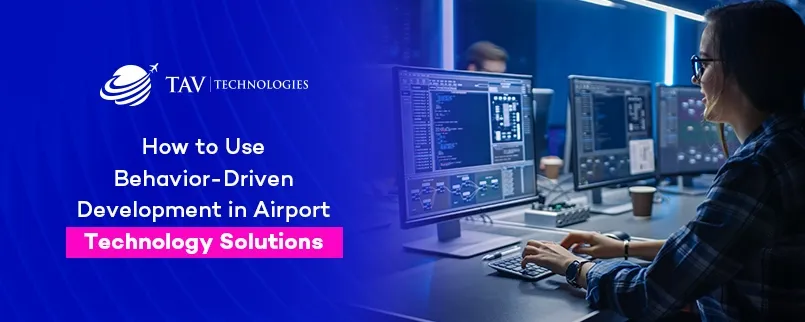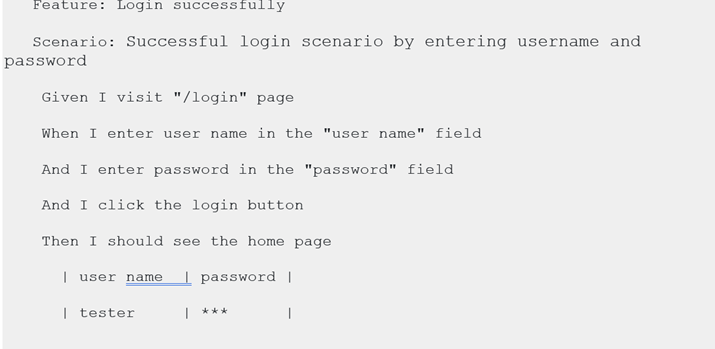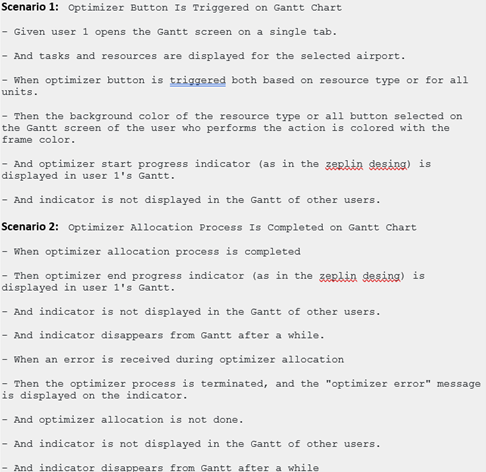
Mar 2023
As the aviation industry continues to grow, airport technology is becoming increasingly important in improving passenger journeys and the efficiency of air travel. However, developing software for airport technology can be complex and challenging, primarily because of strict regulations and safety standards. This is where Behavior-Driven Development (BDD) comes in as a software development approach that can help enhance collaboration and quality in airport technology.
What is Behavior-Driven Development (BDD)?
Behavior-driven development (BDD) is one of the Agile software development methodologies in which an app is designed in line with the behavior a user expects to go through when interacting with the system. It is a way of developing software that focuses on what the software should do rather than how it should be implemented. Instead of just writing code and testing it, BDD involves a collaboration between developers, testers, and stakeholders to define the behavior of the software in a structured and easy-to-understand format. The idea is to ensure that everyone involved in the development process clearly understands the software's aim and how it should behave—this kind of work results in the final product meeting the needs and requirements of all parties involved.
A typical development process through BDD methodology would start with a meeting between the developers, managers, and customers to create an overall picture of how this application is intended to work. The expectations about the app's behaviors are then defined as project targets for the developers. The BDD process involves writing automated tests that verify that the software behaves as expected. These tests are based on the defined behaviors of the system, and they guarantee that the software works properly and meets the needs of its users. The moment when behavior tests are passed, the product has met its previously set requirements, and it becomes ready for launch.
How Does Behavior-Driven Development Work?
The following guide shares a general understanding of how BDD works:
Defining Requirements with User Stories
The first step in BDD is defining the software system's requirements. This is typically done using user stories written in a language that both technical and non-technical stakeholders easily understand.
Writing Scenarios with Gherkin
Once the requirements have been defined, the next step is to write scenarios that describe the system's expected behavior in response to various user actions and interactions with other systems. These scenarios are written using the Gherkin language, a plain-text language that is easy to read and write.
Automated Testing with BDD Frameworks
After scenarios are completed, they are used to create automated tests that verify the behavior of the software.
Developing and Testing with BDD
With the automated tests in place, developers can begin implementing the code for the software system. As they write the code, they can run automated tests to ensure the system behaves as expected. Thus, they can detect bugs and issues at earlier stages.
What Are the Benefits of Behavior-Driven Development?
Behavior-Driven Development (BDD) offers several advantages that ensure software meets business requirements and user needs. By focusing on system behavior and concrete examples, the BDD approach guarantees that the software meets the requirements and expectations of all stakeholders. Therefore, this modern approach leads to enhanced user satisfaction and efficiency in the development process.
Furthermore, BDD promotes better communication and collaboration between developers and stakeholders. By getting different parties together in the development process, this approach enables feedback and clarification on the anticipated behavior of the system. Thus, all parties can be on the same page. The development process is oriented towards delivering the best possible outcome for the business.
BDD's emphasis on specific examples helps identify potential issues and misunderstandings earlier in the development cycle. By focusing on system behavior, BDD can highlight potential problems that may have gone unnoticed using other development approaches. Early detection of potential issues allows timely corrective action and reduces the possible costs of fixing problems later.
Use Cases of Behavior-Driven Development at TAV Technologies
TAV Technologies also benefit from behavior-driven development for a better development cycle regarding problem detection and collaborative approach. With BDD, we can write and code test automation scenarios using keywords: Given, When, And, and Then.
Given – When – Then Approach
- Given - is a precondition or current state of the system
- When - is the action which happens on the system
- And - is the following action which occurs on the system
- Then - is the outcome of the event that happened in the 'When' step
To write test cases using BDD, TAV Technologies prefers a tool called Cucumber, a BDD framework. The test cases are written in feature files with the "feature" extension. Each feature file contains multiple scenarios, including the Action Words created with Given/When/And/Then. After developing the feature, the feature files can be executed, which generates test reports. Our business analysts easily cross-check to see if anything is missing from the feature developed since they can easily understand the language.
In summary, BDD is an approach TAV Technologies uses to improve its development cycle. It involves writing and coding test automation scenarios using specific keywords with the help of the Cucumber tool. The resulting test reports are easily understandable by business analysts, which helps to ensure that the developed features meet the desired requirements.
Use Case1: Successful Login Scenario

Use Case 2: Gantt Chart Actions User Story Acceptance Criteria

